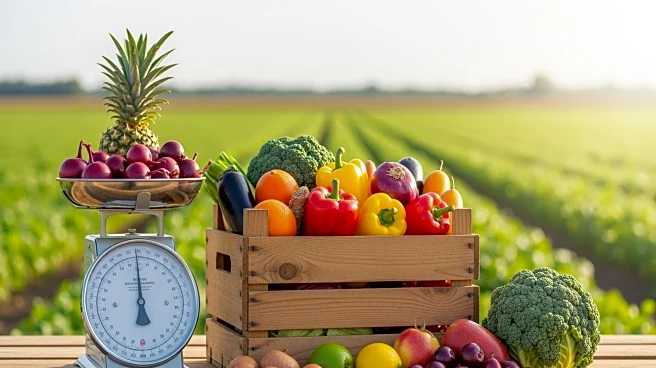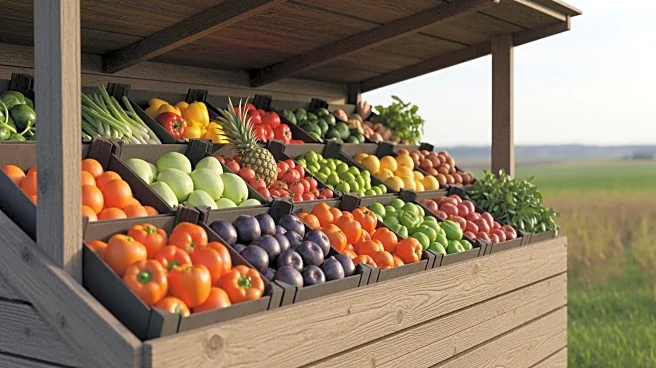What's Happening?
The U.S. soybean harvest is reported to be nearly three-quarters complete, with corn harvesting also progressing despite interruptions from showers in the eastern Corn Belt. According to a Reuters poll
of 11 analysts, the soybean crop was 73% harvested by Sunday, while the corn harvest was 59% complete. The U.S. Department of Agriculture (USDA) has not released its weekly crop progress report due to an ongoing government shutdown, leaving analysts to rely on private surveys for data. The shutdown has affected the USDA's ability to provide timely updates, with no reports released since September 29. Analysts have rated 63% of the current U.S. corn crop in good-to-excellent condition, a slight decrease from the previous week's poll.
Why It's Important?
The absence of USDA reports due to the government shutdown has significant implications for farmers and traders who rely on this data for decision-making. The lack of official data may lead to uncertainty in the agricultural markets, affecting pricing and trading strategies. The progress of the harvest is crucial for determining supply levels, which in turn influence market prices and export potential. The ongoing harvest of the largest U.S. corn crop in history and a bumper soy crop could impact global agricultural markets, especially in regions dependent on U.S. exports. The situation underscores the importance of government data in stabilizing market expectations and guiding agricultural policy.
What's Next?
With the government shutdown continuing, stakeholders in the agricultural sector may need to rely on private surveys and reports for crop progress updates. The USDA's inability to provide timely data could lead to increased volatility in agricultural markets. Farmers and traders may need to adjust their strategies based on alternative data sources, potentially affecting pricing and export decisions. The shutdown's resolution will be crucial for restoring the regular flow of information and stabilizing market conditions.
Beyond the Headlines
The government shutdown highlights the vulnerability of critical data systems and the reliance of various sectors on timely and accurate information. The agricultural sector's dependence on USDA reports for planning and market strategies underscores the broader implications of government operations on economic stability. The situation may prompt discussions on contingency measures and alternative data sources to mitigate the impact of future disruptions.












